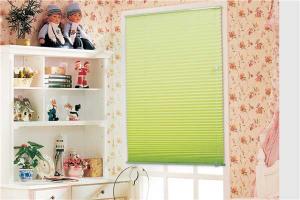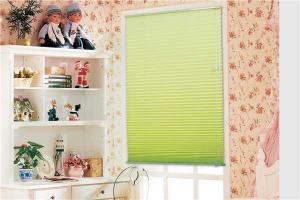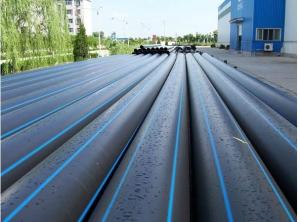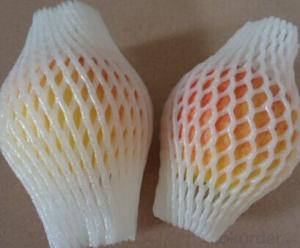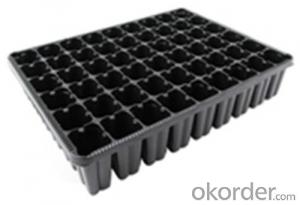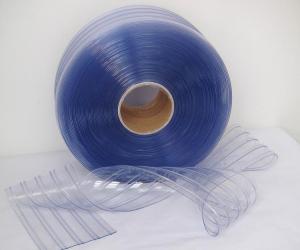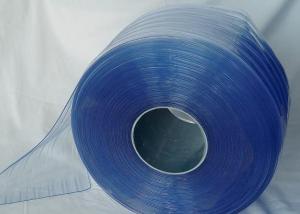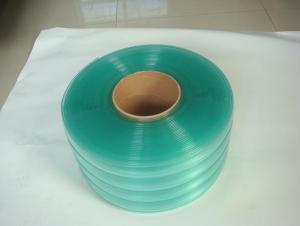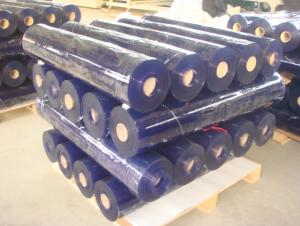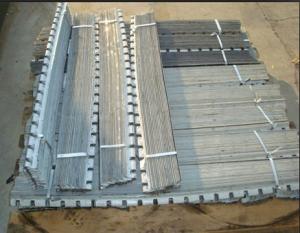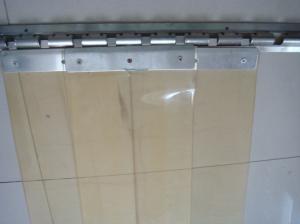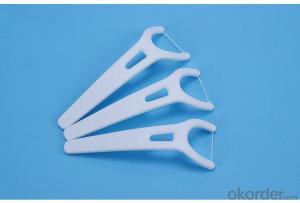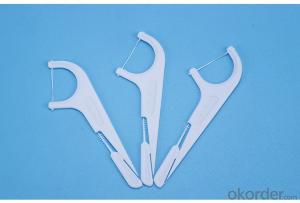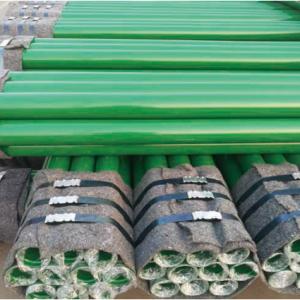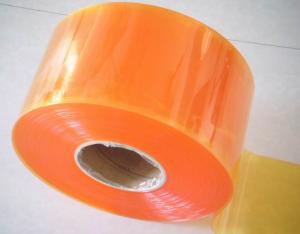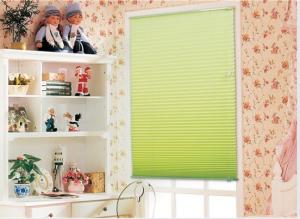25mm Up and Down Pleated Blind For Home And Office
- Loading Port:
- Ningbo
- Payment Terms:
- TT or LC
- Min Order Qty:
- 1000 m
- Supply Capability:
- 500000 m/month
OKorder Service Pledge
Quality Product, Order Online Tracking, Timely Delivery
OKorder Financial Service
Credit Rating, Credit Services, Credit Purchasing
You Might Also Like
The curtain could be used in home and office for decorating or shading. The material of products in our company is eco- friendly and durable, and the UV-protection for this goods is strong. It's easy to install and disassemble to clean. And it looks quite beautiful and practical. The main materials for curtain are polyester and non-woven cloth, its track is aluminum and the snap is plastic.At the same time, Material, color and size can be customized as customer's demand.
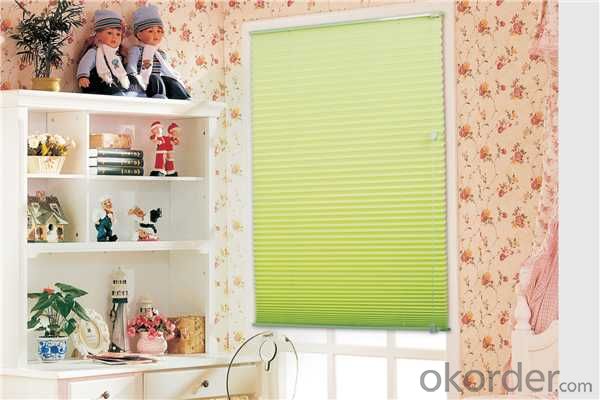




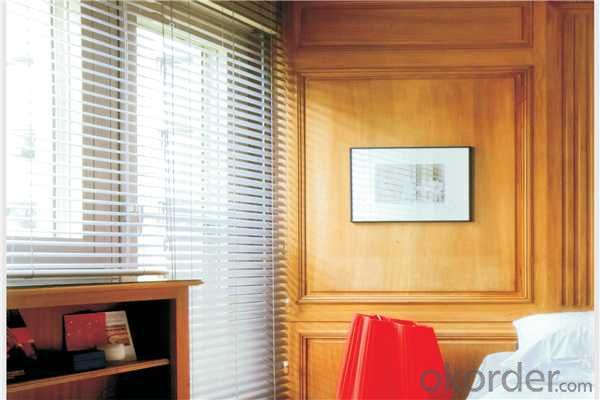
- Q:How can I dispose of plastic parts from home appliances responsibly?
- One responsible way to dispose of plastic parts from home appliances is by recycling them. Check with your local recycling center or municipality to see if they accept plastic parts for recycling. If they do, make sure to clean the parts thoroughly and separate them from other materials. If recycling is not an option, consider donating the parts to a local repair shop or appliance recycling program that may be able to repurpose or reuse them.
- Q:Can plastic home appliances be easily moved or transported?
- Yes, plastic home appliances are typically lightweight and designed to be easily moved or transported.
- Q:How can I clean plastic parts in my home appliances without damaging them?
- To clean plastic parts in your home appliances without causing any damage, start by unplugging the appliance and removing any detachable plastic parts. Create a solution of mild dish soap and warm water, and use a soft cloth or sponge to gently wipe the plastic surfaces. Avoid using abrasive cleaners, harsh chemicals, or scrub brushes, as they can cause scratches or discoloration. Rinse the parts thoroughly with clean water and dry them completely before reattaching.
- Q:Can plastic home appliances be safely used in households with allergies or sensitivities?
- Yes, plastic home appliances can be safely used in households with allergies or sensitivities. Most plastic appliances are made from materials that are hypoallergenic and do not release harmful substances into the air. However, it is always recommended to check the product labels and choose appliances that are specifically designed for allergy-sensitive individuals or have been certified as allergy-friendly. Additionally, regular cleaning and maintenance of the appliances can help minimize any potential allergens or irritants.
- Q:Are there any specific regulations or standards regarding the use of flame-retardant plastic in home appliances?
- Yes, there are specific regulations and standards in place for the use of flame-retardant plastic in home appliances. These regulations are aimed at ensuring the safety of consumers by reducing the risk of fires caused by appliances. Regulatory bodies, such as the Consumer Product Safety Commission (CPSC) in the United States, set standards that govern the flammability of plastics used in appliances. These standards include testing procedures and performance criteria that manufacturers must meet to ensure their products are safe for use in homes.
- Q:What are some common manufacturing processes used for home appliance plastics?
- Some common manufacturing processes used for home appliance plastics include injection molding, blow molding, thermoforming, and extrusion.
- Q:How do home appliance plastics contribute to the overall efficiency of the appliance?
- Home appliance plastics contribute to the overall efficiency of the appliance by providing lightweight, durable, and cost-effective components that enable better energy conservation, improved performance, and increased lifespan for the appliance.
- Q:Are there any limitations in terms of corrosion resistance for plastic parts in home appliances?
- Yes, there are limitations in terms of corrosion resistance for plastic parts in home appliances. While plastic is generally resistant to most types of corrosion, it can still be vulnerable to certain corrosive agents such as strong acids or alkalis. Additionally, prolonged exposure to UV radiation and high temperatures can cause degradation and reduce the overall corrosion resistance of plastic parts. Therefore, it is important to choose the right type of plastic and apply appropriate coatings or protective measures to enhance their resistance against corrosion in home appliances.
- Q:What are the considerations when choosing the right plastic for a specific home appliance component?
- When choosing the right plastic for a specific home appliance component, several considerations need to be taken into account. First, the mechanical properties of the plastic must match the requirements of the component, such as its strength, flexibility, and durability. Additionally, factors like temperature resistance, chemical compatibility, and electrical conductivity should be evaluated to ensure the plastic can withstand the environment it will be exposed to. Other considerations may include cost, ease of manufacturing, recyclability, and any regulatory requirements. Ultimately, the choice of plastic should be driven by a thorough analysis of the component's performance demands and the specific needs of the appliance.
- Q:How does the friction or slip resistance of plastic parts in home appliances affect their functionality?
- The friction or slip resistance of plastic parts in home appliances directly affects their functionality. If the plastic parts have high friction or slip resistance, they can provide better grip and stability, ensuring that the appliance stays in place during operation. This is particularly important for appliances like blenders or mixers, where excessive movement could cause accidents or spills. On the other hand, if the plastic parts have low friction or slip resistance, they might not be able to hold the appliance securely, resulting in vibrations, instability, or even complete failure of the appliance's functionality. Therefore, the friction or slip resistance of plastic parts plays a crucial role in ensuring the reliable and safe operation of home appliances.
1. Manufacturer Overview |
|
|---|---|
| Location | |
| Year Established | |
| Annual Output Value | |
| Main Markets | |
| Company Certifications | |
2. Manufacturer Certificates |
|
|---|---|
| a) Certification Name | |
| Range | |
| Reference | |
| Validity Period | |
3. Manufacturer Capability |
|
|---|---|
| a)Trade Capacity | |
| Nearest Port | |
| Export Percentage | |
| No.of Employees in Trade Department | |
| Language Spoken: | |
| b)Factory Information | |
| Factory Size: | |
| No. of Production Lines | |
| Contract Manufacturing | |
| Product Price Range | |
Send your message to us
25mm Up and Down Pleated Blind For Home And Office
- Loading Port:
- Ningbo
- Payment Terms:
- TT or LC
- Min Order Qty:
- 1000 m
- Supply Capability:
- 500000 m/month
OKorder Service Pledge
Quality Product, Order Online Tracking, Timely Delivery
OKorder Financial Service
Credit Rating, Credit Services, Credit Purchasing
Similar products
New products
Hot products
Hot Searches
